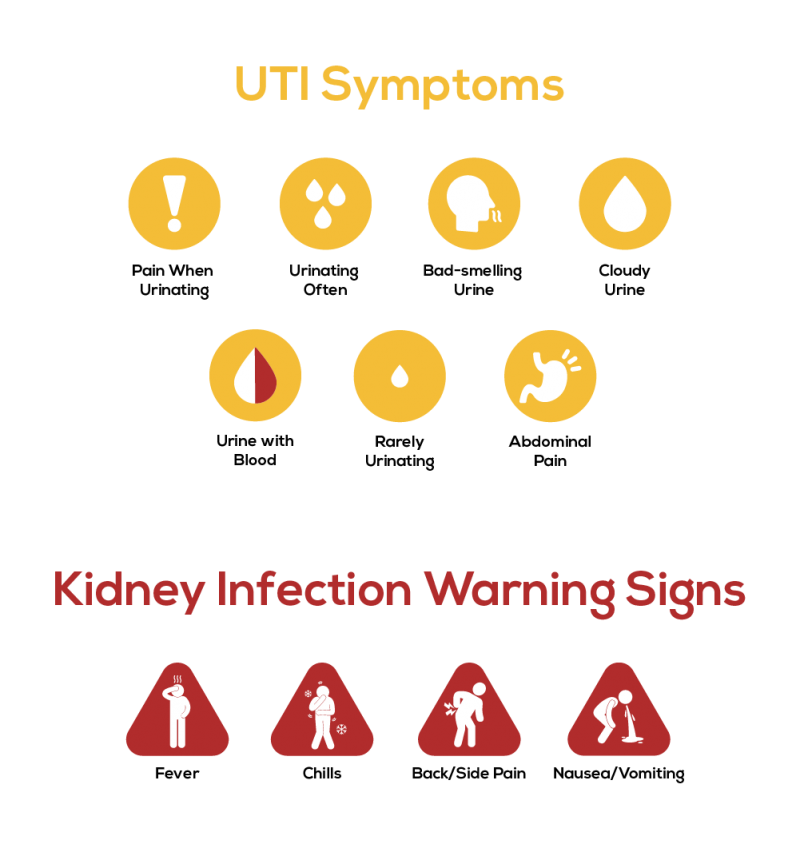Comprehending the Trick Distinctions Between Kidney Stones and Urinary System System Infections: An Extensive Review for Individuals
Comprehending the differences in between kidney stones and urinary system infections (UTIs) is vital for patients who may be experiencing similar symptoms yet face greatly different health obstacles. As we check out these vital elements, it comes to be clear that recognizing the unique qualities of each condition can greatly affect individual outcomes.
Review of Kidney Stones
The formation of kidney stones, a commonly devastating and painful condition, emphasizes the essential significance of keeping renal wellness. Kidney stones, likewise called kidney calculi, are strong masses that develop from crystals in the pee. These stones can differ in dimension from a grain of sand to a golf round and can stay in any type of part of the urinary tract. The primary types of kidney stones consist of calcium oxalate, calcium phosphate, uric acid, struvite, and cystine stones, each with unique reasons and danger aspects.
Several factors contribute to the development of kidney stones. Additionally, metabolic disorders and certain medical problems might incline individuals to stone formation.
Signs and symptoms of kidney stones can consist of extreme flank discomfort, nausea or vomiting, and hematuria, which frequently motivate immediate medical examination. Therapy options differ, varying from raised liquid intake and nutritional adjustments to clinical treatments such as lithotripsy or surgical removal, relying on the size and place of the stones. Recognizing these elements is necessary for effective prevention and monitoring.
Review of Urinary Tract Infections
Urinary system tract infections (UTIs) represent a common yet considerable wellness problem, affecting millions of people each year. These infections take place when bacteria go into the urinary system, which consists of the kidneys, ureters, bladder, and urethra. Most of UTIs are triggered by Escherichia coli, a type of microorganisms generally located in the intestinal tract. While UTIs can influence any person, they are specifically widespread in women because of physiological distinctions that assist in microbial access.
The threat factors for creating a UTI include sexual task, particular types of birth control, urinary system retention, and a background of previous infections. Uncomplicated UTIs are usually restricted to the bladder and are extra usual in healthy people, while challenging UTIs might include the kidneys and take place in those with underlying health issues.
Prompt diagnosis and treatment are important to prevent difficulties, such as recurring infections or kidney damages (Kidney Stones vs UTI). Normally, UTIs are treated with antibiotics, and preventive measures can be employed for those with regular incidents
Typical Signs Contrast
Signs and symptoms of urinary system tract infections and kidney stones can typically overlap, leading to complication in diagnosis. In comparison, kidney stones tend to trigger extreme, sharp pain that emits from the back to the lower abdominal area and groin, often defined as colicky pain.
Additionally, UTIs might be come with by fever and cools, specifically in a lot more serious cases, while kidney stones can lead to nausea or vomiting and vomiting due to intense pain. While discomfort throughout urination is a characteristic of UTIs, kidney stones generally provide with more intense discomfort episodes, which might come and go.
Diagnosis Methods
How can health care experts precisely differentiate in between kidney stones and urinary system tract infections? The diagnostic procedure begins with a complete medical history and a comprehensive testimonial of the patient's symptoms. Clinicians typically carry out a checkup, which may reveal inflammation in the abdomen or flank area, leading the diagnostic pathway.
Lab tests play an essential duty in differentiating in between these 2 problems. Kidney Stones vs UTI. A urinalysis can recognize the presence of blood, crystals, or bacteria, which are a sign of either problem. In situations of urinary system system infections, the urinalysis may reveal a substantial presence of leukocyte and nitrites, while kidney stones might present with details crystals
Imaging studies, such as stomach ultrasound or computed tomography (CT) scans, are important for picturing kidney stones. These imaging techniques my link enable doctor to assess stone dimension, place, and potential blockages in the urinary system. On the other this contact form hand, urinary system tract infections generally do not require imaging unless complications are believed.
With each other, these diagnostic methods equip medical care experts to precisely diagnose and set apart between kidney stones and urinary system tract infections, ensuring that people obtain ideal treatment and administration.
Therapy Alternatives and Prevention
While both kidney stones and urinary tract infections (UTIs) need prompt treatment, their monitoring techniques differ considerably.
The therapy for kidney stones typically involves pain management, hydration, and in many cases, clinical procedures such as extracorporeal shock wave lithotripsy (ESWL) or ureteroscopy to remove or damage down stones. Individuals are frequently advised to raise liquid consumption to help with stone passage and minimize reappearance. Nutritional adjustments might additionally be required, depending upon the stone kind.
In comparison, UTIs are largely treated with anti-biotics to eradicate the bacterial infection. The details antibiotic recommended depends upon the bacteria identified and local resistance patterns. Extra procedures, such as increased liquid consumption and urinary system anesthetics, might assist minimize signs and symptoms.
Avoidance strategies vary too; for kidney stones, keeping adequate hydration and adhering to nutritional limitations can be efficient. For UTIs, precautionary techniques include appropriate health techniques, urinating after intercourse, and perhaps prophylactic prescription antibiotics for recurrent infections. Comprehending these treatment and avoidance modalities is crucial for effective administration and to decrease the danger of problems related to both problems.
Verdict

Comprehending the distinctions in between kidney stones and urinary system system infections (UTIs) is crucial for people who may be experiencing similar signs and symptoms yet face greatly various health obstacles. The main kinds of kidney stones include calcium oxalate, calcium phosphate, uric acid, struvite, and cystine stones, each with distinct reasons and risk variables.
